Oat okara is a nutrient-rich pulp that’s a byproduct of oat milk processing. It’s often underutilized despite its high protein and fiber content. Produced in large quantities, it represents not only a sustainability challenge but also a significant economic opportunity for the food science industry. With potential applications in food fortification and as a cost-effective ingredient in baked goods, snacks, and more, utilizing oat okara can reduce waste and add value to the production chain. If we can unlock its potential, it can benefit both the environment and the food industry.
Oats and Oat Milk
Oats (Avena sativa) are one of the most popular grains grown worldwide. Oats are used in various applications, such as health foods, cosmetics, pharmaceuticals, and nutritional medicines (Soycan et al., 2019).
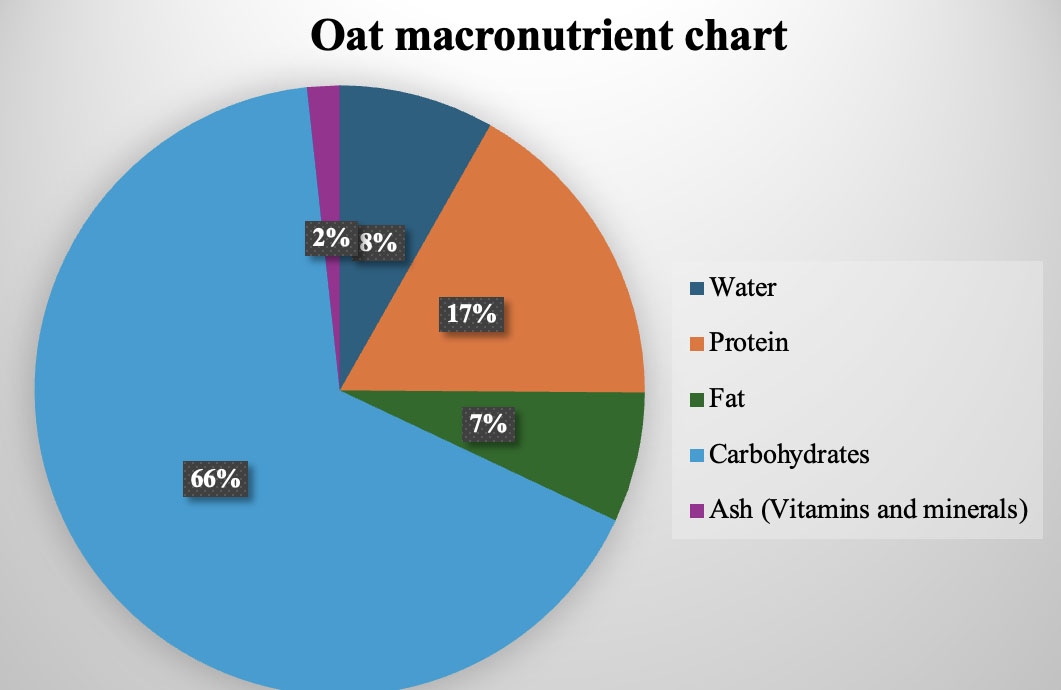 Figure 1. Overall Macronutrients of Oats
Figure 1. Overall Macronutrients of Oats
Data from “Oats,” by the Agricultural Research Service, 2019, U.S. Department of Agriculture ().
Its nutritional properties allow for many of these applications—it’s rich in dietary fiber, such as β-glucan from its high carbohydrate content (Figure 1), and indispensable amino acids (IAA) such as lysine, valine, isoleucine, and threonine (McElroy et al., 1949; Agricultural Research Service, 2019). Oats are reported to be rich in B vitamins (Figure 2), such as vitamin B1 (thiamin) and B5 (pantothenic acid), which may improve metabolism.
 Figure 2. Vitamin Content of Oats.
Figure 2. Vitamin Content of Oats.
Data from “Oats,” by the Agricultural Research Service, 2019, U.S. Department of Agriculture ().
In the food industry, oats can be converted into a wide range of food products such as oatmeal, granola bars, oat bran, and various beverages. In the beverage products category, oat milk is processed into dairy-alternative products such as plant-based milk. The growing demand for plant-based milk is driven by the high prevalence of lactose intolerance, dairy milk allergies, and the rising popularity of plant-based diets (Suryamiharja et al., 2024). The current leading plant-based milk in the U.S. market is almond milk, followed by oat milk, which are valued at approximately $13.06 billion and $2.98 billion, respectively (Fructuoso et al., 2021).
Oat milk has a huge market potential, with the forecasted annual growth of 9.4% to 12.2% from 2024 to 2030 (Mordor Intelligence, n.d.). Oat milk’s popularity has risen because of its neutral taste and delicate texture. Oat milk is also rich in dietary fibers (β-glucan) and phenolic compounds called avenanthramides, which can aid digestion and help lower cholesterol levels (Cui et al., 2023). Compared to cow’s milk, oat milk is also richer in unsaturated fatty acids (Figure 3) such as α-linoleic acid and oleic acid, which could decrease the risk of cardiovascular disease.
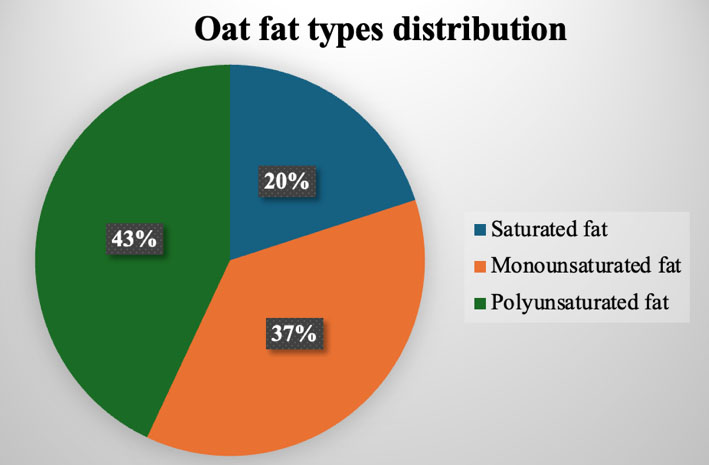 Figure 3. Fat Types in Oats.
Figure 3. Fat Types in Oats.
Data from “Oats,” by the Agricultural Research Service, 2019, U.S. Department of Agriculture ().
However, a major challenge in oat milk production is the creation of oat okara, a byproduct rich in protein and fiber. While this byproduct has high nutritional value and potential economic benefits, it also represents the nutrients lost when producing oat milk. For example, oat milk typically contains only 2–3 g of protein per serving, far less than the 10 g it could provide if all nutrients were retained.
Oat Milk Processing
Producing oat milk involves multiple steps: raw oat pretreatment, wet milling, enzymatic hydrolysis, centrifugation, homogenization, and sterilization (Cui et al., 2023). Pretreating raw oats aims to produce a suitable starting material for oat milk processing. In industrial processing, when oat kernels are used, they need to be blanched and soaked before milling, whereas oat flakes and oat flour can be processed directly by wet milling.
Enzymatic hydrolysis breaks down the large polysaccharides in the oats into simple sugars. These sugars contribute to a sweeter aftertaste, enhancing oat milk's sensory properties (Sethi et al., 2016). The most commonly used enzymes for hydrolysis are α-amylase and β-amylase, which break down polysaccharides into disaccharides and trisaccharides (Konczewicz & Koz?owski, 2012). Enzymes like amyloglucosidase are also added to produce more prominent sweetness by generating dextrin or monosaccharides. The use of enzymes like phytase is usually optional, especially if the oats have been presoaked or blanched. The addition of phytase can be beneficial to break down phytic acid in the oat milk, improving the absorption of micronutrients such as iron, zinc, and calcium (Gupta et al., 2015).
Next, centrifugation is used to remove the insoluble material following enzymatic treatment. This insoluble material is considered a byproduct consisting primarily of starches and proteins that are not soluble through enzymatic hydrolysis. The primary goal of centrifugation is to reduce oat milk’s viscosity in preparation for adding ingredients such as salts, vitamins, and stabilizers during homogenization.
Homogenization ensures that the added ingredients are thoroughly mixed to produce a uniform and milklike solution. Homogenization also enhances the stability of oat milk by breaking down insoluble particles, such as insoluble fiber and proteins, which cannot be hydrolyzed by enzymes (Gurand et al., 2003). Finally, sterilization is carried out to extend the shelf life of the oat milk. Current methods use pasteurization and high-pressure sterilization to kill potential microorganisms and prolong shelf life (Demir et al., 2021; Helstad et al., 2023). It is essential to apply correct sterilization parameters to retain the nutritional properties of oat milk and ultimately extend its shelf life. Figure 4 illustrates the complete oat milk production process.
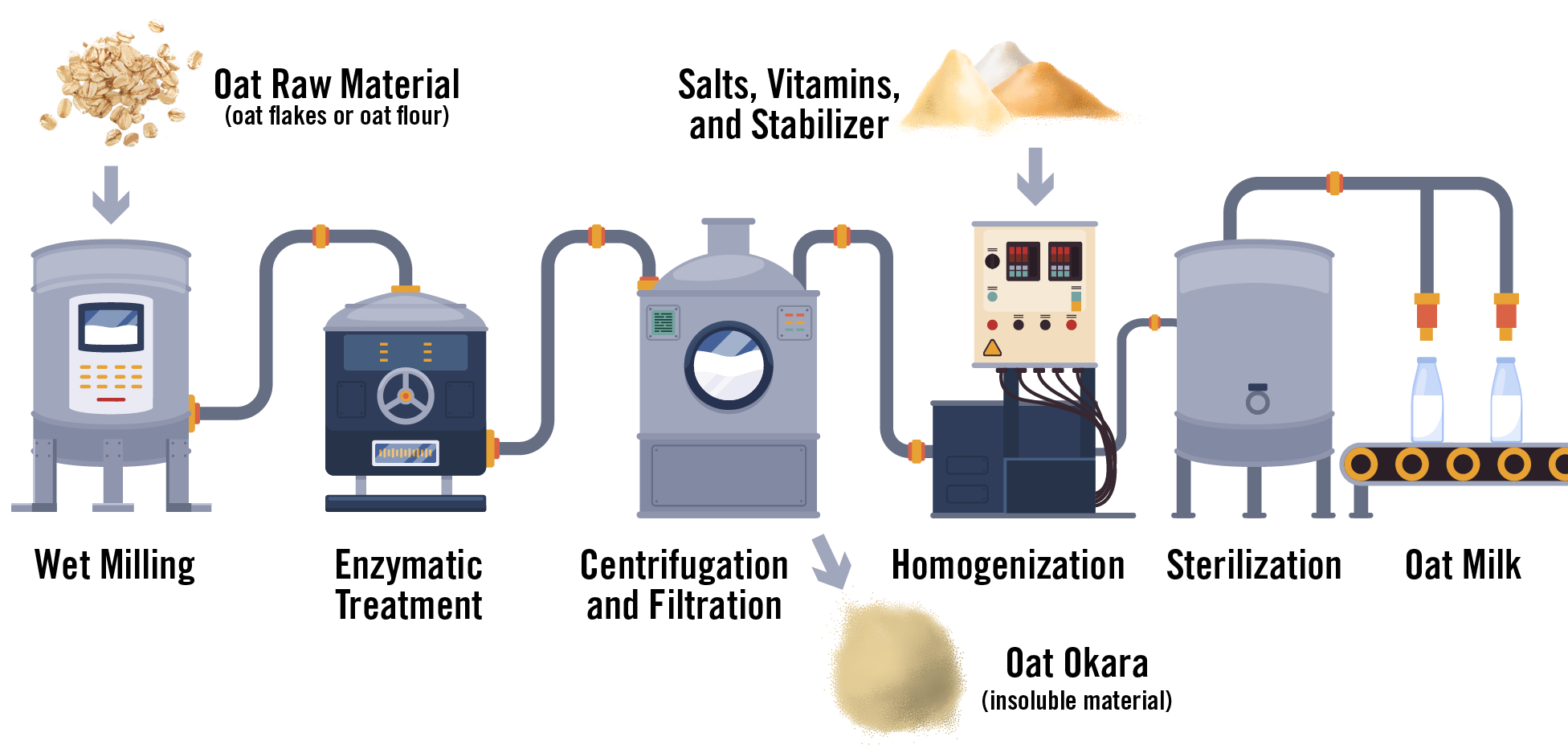 Figure 4. Schematic Representation of Oat Milk Processing.
Figure 4. Schematic Representation of Oat Milk Processing.
Adapted from “A comprehensive review on oat milk: From oat nutrients and phytochemicals to its processing technologies, product features, and potential applications,” by L. Cui, Q. Jia, J. Zhao, D. Hou, and S. Zhou, 2023, Journal of Food and Function, 14, p. 5862 ().
Oat Okara
Okara is a Japanese word referring to the squeezed pulp of soy milk that is created during tofu production. This byproduct of tofu production is also highly nutritious (Li et al., 2012). Similarly, oat okara refers to the squeezed pulp byproduct of oat milk processing. Also known as oat mill waste, oat okara is generated after the milling process and is typically collected after centrifugation as the insoluble material left following enzymatic hydrolysis.
Oat okara is often freeze-dried and commercialized as animal feed (Prado et al., 2008). However, there is still limited information regarding the quantity of oat okara produced during oat milk processing. One study reported that approximately 0.45 kg of oat okara is produced per 1 kg of oats used in oat milk production (Helstad et al., 2023).
A simple experiment was conducted in the lab to estimate the amount of okara produced during oat milk processing. Oat flour (Old Fashioned Quaker Oats) was wet-milled (1:10 weight/volume) with deionized water for 10 min without any enzymatic treatments (Ma, 1983). The sample was then centrifuged at 4,000 rpm for 15 min, and both the supernatant and pellet were dried in a convection oven at 40 °C overnight. The dry weight was then measured. The results showed that approximately 0.68 kg of oat okara was produced per 1 kg of oats, which is reasonable since enzymes typically solubilize more carbohydrates and reduce the viscosity of the oat milk solution. The study conducted by Helstad et al. (2023) reported approximately 0.40–0.60 kg of oat okara produced per 1 kg of oats used in oat milk production.
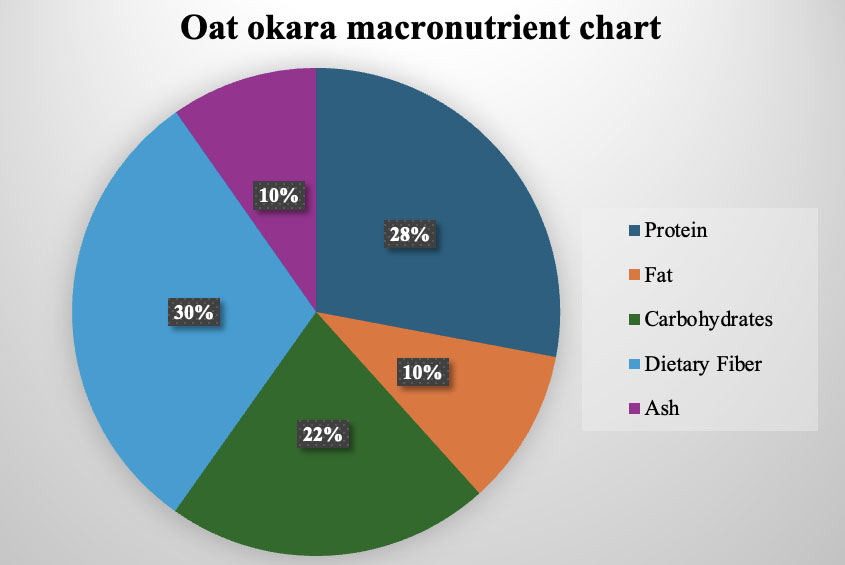 Figure 5. Nutritional Content of Oat Okara.
Figure 5. Nutritional Content of Oat Okara.
Note. Data averaged from values obtained from Aiello et al. (2021) and Patsioura et al. (2011).
Oat okara was also reported to have high nutritional values, such as protein and dietary fiber (Figure 5; Aiello et al., 2021; Patsioura et al., 2011). This suggests that current oat milk processing steps have not optimized the extraction of either protein or dietary fiber, causing them to remain insoluble in the solution. In fact, commercial oat milk only offers approximately 2–3 g of protein (Figure 6).
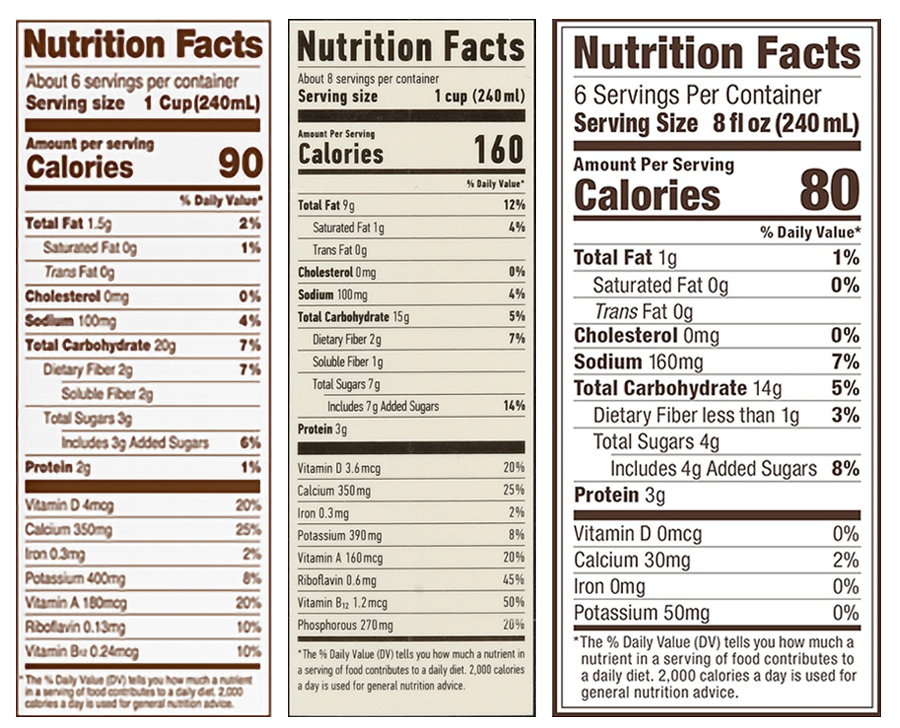 Figure 6. Protein Content of Three Different Brands of Oat Milk. Left to right: Nutrition Facts panels from Planet Oat®, Oatly, and Califia.
Figure 6. Protein Content of Three Different Brands of Oat Milk. Left to right: Nutrition Facts panels from Planet Oat®, Oatly, and Califia.
Assuming 60 g of oats is used to make one serving of oat milk (240 ml), there will be approximately 27 g of oat okara produced for this same serving (Helstad et al., 2023). Oat flour contains approximately 17% protein, and if all of that were soluble, the resulting oat milk would have approximately 10 g of protein per serving (Agricultural Research Service, 2019). In reality, approximately 8 g of protein is left behind in the oat okara (see Table 1).
Table 1. Protein Loss in Processing Oat Okara.
|
Processing stage
|
Amount on a dry basis (g)
|
|
Starting oat flour
|
60
|
|
Protein in starting oat flour
|
10
|
|
Oat okara produced
|
27
|
|
Protein in oat okara
|
8
|
|
Oat protein remaining in the solution
|
2
|
Future Directions
The large fraction of residual fiber and protein in oat okara underscores the need to improve oat milk processing for better nutrient retention. For instance, current oat milk processing lacks optimized protein and dietary fiber extraction steps, which could be improved to retain more of these nutrients in the solution. Studies have shown that enzymatic deamidation can improve oat protein solubility in the solution (Jiang et al., 2015). Additionally, extrinsic variables such as pH, salt concentrations, and temperature should be optimized to retain more nutritional value in oat milk production (Li et al., 2021). Other key parameters, such as sterilization, homogenization pressure, and the addition of ingredients, also play a part in the production of better oat milk.
The high protein and dietary fiber content of oat okara offers opportunities for fortification. It can be used to enrich food products like ice cream and baked goods, or could be reprocessed or solubilized back into the oat milk solution. Moreover, oat okara’s fiber and protein can serve as a substitute for wheat or soy flour in food production, making it a valuable allergen-free alternative.
References
Agricultural Research Service. (2019, April 1). Oats. U.S. Department of Agriculture. Retrieved September 27, 2024, from
Aiello, G., Li, Y., Xu, R., Boschin, G., Juodeikiene, G., & Arnoldi, A. (2021). Composition of the protein ingredients from Insoluble oat byproducts treated with food-grade enzymes, such as amylase, cellulose/xylanase, and protease. Foods, 10(11), 2695.
Cui, L., Jia, Q., Zhao, J., Hou, D., & Zhou, S. (2023). A comprehensive review on oat milk: From oat nutrients and phytochemicals to its processing technologies, product features, and potential applications. Journal of Food and Function, 14, 5858–5869.
Demir, H., Simsek, M., & Yildirim, G. (2021). Effect of oat milk pasteurization type on the characteristics of yogurt. LWT Food Science and Technology, 135, 110271.
Fructuoso, I., Romão, B., Han, H., Raposo, A., Ariza-Montes, A., Araya-Castillo, L., & Zandonadi, R. P. (2021). An overview on nutritional aspects of plant-based beverages used as substitutes for cow’s milk. Nutrients, 13(8), 2650.
Gupta, R. K., Gangoliya, S. S., & Singh, N. D. (2015). Reduction of phytic acid and enhancement of bioavailable micronutrients grains. Journal of Food Science and Technology, 52, 676–684.
Gurand, A., Franks, G. V., & Hosken, R. W. (2003). Particle sizes and stability of UHT bovine, cereal and grain milks. Food Hydrocolloids, 17(5), 671–678.
Helstad, A., Marefati, A., Ahlström, C., Rayner, M., Purhagen, J., & Östbring, K. (2023). High-pressure pasteurization of oat okara. Foods, 12(22), 4070.
Mordor Intelligence. (n.d.). United States oat milk market size and share analysis – Growth trends & forecasts up to 2029. Retrieved September 27, 2024, from
Jiang, Z.-Q., Sontag-Strohm, T., Salovaara, H., Sibakov, J., Kanerva, P., & Loponen, J. (2015). Oat protein solubility and emulsion properties improved by enzymatic deamidation. Journal of Cereal Science, 64, 126–132.
Konczewicz, W., & Koz?owski, R. M. (2012). 5 - Enzymatic treatment of natural fibres. In R. M. Koz?owski (Ed.), Handbook of Natural Fibres (Vol. 2, pp. 168–184). Woodhead Publishing.
Li, B., Qiao, M., & Lu, F. (2012). Composition, nutrition, and utilization of okara (soybean residue). Food Reviews International, 28(3), 231–252.
Li, R., & Xiong, Y. L. (2021). Sensitivity of oat protein solubility to changing ionic strength and pH. Journal of Food Science, 86(1), 78–85.
Ma, C. Y. (1983). Preparation, composition and functional properties of oat protein isolates. Canadian Institute of Food Science and Technology Journal, 16(3), 201–205.
McElroy, L. W., Clandinin, D. R., Lobay, W., & Pethybridge, S. I. (1949). Nine essential amino acids in pure varieties of wheat, barley and oats. The Journal of Nutrition, 37(3), 329–336.
Patsioura, A., Galanakis. C. M., & Gekas, V. (2011). Ultrafiltration optimization for the recovery of beta-glucan from oat mill waste. Journal of Membrane Science, 373(1–2), 53–63.
Prado, F. C., Parada, J. L., Pandey, A., & Soccol, C. R. (2008). Trends in non-dairy probiotic beverages. Food Research International, 41(2), 111–123.
Sethi, S., Tyagi, S. K., & Anurag, R. K. (2016). Plant-based milk alternatives an emerging segment of functional beverages: A review. Journal of Food Science and Technology, 53, 3408–3423.
Soycan, G., Schär, M. Y., Kristek, A., Boberska, J., Alsharif, S. N. S., Corona, G., Shewry, P. R., & Spencer, J. P. E. (2019). Composition and content of phenolic acids and avenanthramides in commercial oat products: Are oats an important polyphenol source for consumers? Food Chemistry: X, 3, 100047.
Suryamiharja, A., Gong, X., & Zhou, H. (2024). Towards more sustainable, nutritious, and affordable plant-based milk alternatives: A critical review. Sustainable Food Proteins, 2(4), 250–267.
Status and Revision History
In Review on Jun 06, 2025
Published on Jul 03, 2025